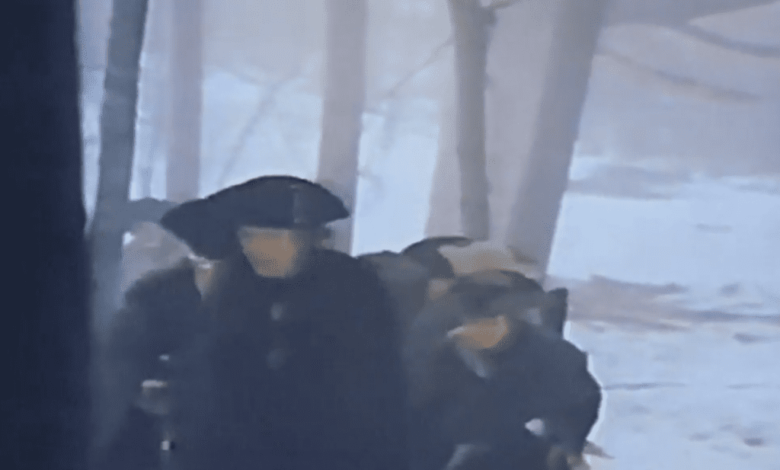The Other Side of Victory: Harsh Realities of the American Revolution


 We are approaching the 250th anniversary of the American Revolution. What should we commemorate? For instance, should we emphasize great battles and glorious victories? Or should we recall more numerous, harsh and sometimes inconclusive encounters between patriot and British forces?
We are approaching the 250th anniversary of the American Revolution. What should we commemorate? For instance, should we emphasize great battles and glorious victories? Or should we recall more numerous, harsh and sometimes inconclusive encounters between patriot and British forces?
A half century ago, the State Bicentennial Commission faced this same question. They produced books, a “Bicentennial Barge” that plied the state’s waterways with artifacts and documents, and other materials. They also designated “Bicentennial Communities.”
They also co-sponsored and supported the production of three films. One, Take Me By the Hand, presented a traditional view of the war in New York. But another, The Other Side of Victory (1977) presented a much harsher view of the war. You can watch it here.
The story is about a company of New York soldiers in the early winter of 1776. It is set somewhere in Southern New York, not specified where, but apparently present-day Westchester
County or nearby which neither the patriots nor the British controlled.
It is cold. Snow covers the ground. Provisions are short. Leadership is lacking. Morale is low. The soldiers’ enlistments are up in a couple of weeks, and they hope their fighting days are nearly over.
The viewer has no idea how the film is going to go. It is full of surprises.
A new commander, called in the film lieutenant Charles Phillips, appears and takes command soon after the film begins. “I thought all Phillipses were Tories,” says a soldier. “Now you know different,” the new commander says.
He drills the soldiers, imposes discipline, boosts morale. But things go wrong. A wounded soldier dies after an operation by an untrained doctor. A young soldier who wandered off and was taken in by the British is captured by the patriots. He is mistakenly thought to be a deserter and is executed.
Phillips is assigned to intercept a British foraging column headed into his sector. At first, his men refuse. They chant “No pay, no meat, no shoes, cold feet.” But Phillips rallies them and they march.
But the inexperienced Phillips splits his troops. He sends half to look for the British in what turns out to be the wrong place. Phillips and the rest of his troops stop to seek provisions for themselves at a farmhouse where the woman at home assures him her husband is away with the patriot militia and “we are all rebels here.”
Actually, she is a loyalist. She delays Phillips and his troops long enough for the other part of his force to walk into a British ambush, with heavy casualties.
Phillips is devastated and redoubles his efforts. “Let’s square some debts today,” he says. He organizes his remaining troops into an ambush, concealing them behind trees and stonewall fences. This is a new patriot tactic, but one which the British, accustomed to fighting in long lines and out in the open, don’t expect. Phillips’ men kill most of them and the rest retreat.
One American soldier exclaims “we stopped them!” But Phillips, leading his troops, is killed in the battle.
As if this were not complicated enough, another armed group is roaming the region. They don’t owe allegiance to either side, are not above stealing, and believe they can take over when the two sides exhaust each other, give up, and leave.
Phillips called them “skinners.” At the end, though, when patriot enlistments are up, some soldiers elect to go with them. Most, though, elect to stay in the patriot army and go next to New Jersey, where General Washington has sent word that he needs them.
Asked why he is sticking with the patriot army, one solider explains: “It is men like us that will make the difference between winning and losing this war.” That may be the keynote and main takeaway from the film.
The Other Side of Victory presents the realities of wartime – inexperienced leadership, blundering tactics, uncertain objectives, and sometimes tragic mistakes.
But it also gets across the message that the cause is worth fighting for. Leadership comes through experience and requires inspiring and rallying followers.
Courage in the face of danger counts. Resilience after a defeat can have heartening results.
Those sound like themes that it would be useful to repeat as we head into New York’s Revolution 250 celebration.
Illustration: Still from The Other Side of Victory, 1977.
Source link





